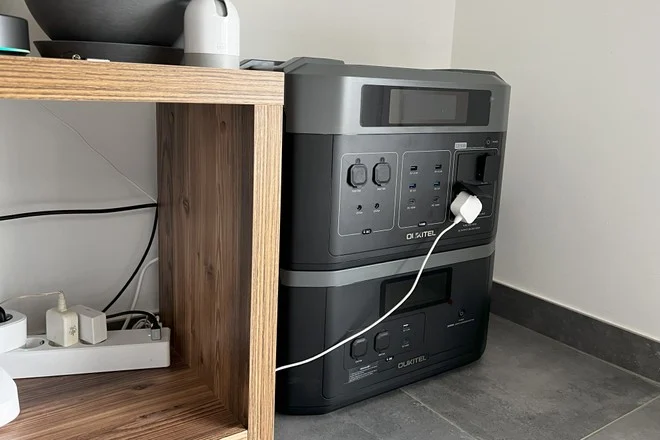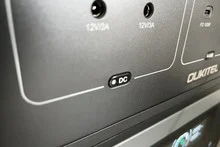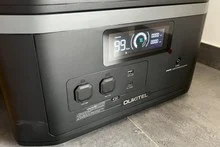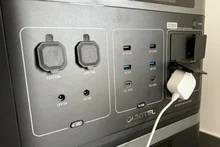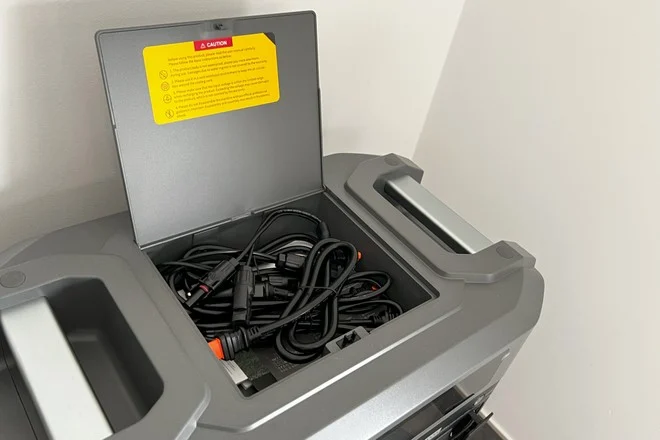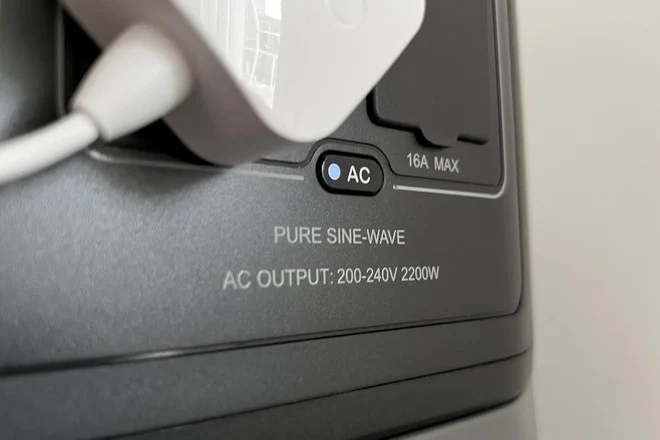I recently moved into a house that I am slowly completing to make it smart (not home automation, but smart home) and energy independent.
The first phase of the project does not include a storage battery, but several months will be dedicated to testing the energy production via a fixed photovoltaic system on the roof (6 kW) and then evaluating, after having collected the data from the different seasons, the convenience and usefulness of a fixed storage battery.
STORAGE BATTERIES: CONSIDERATIONS
Today, the term “savings” is often used when talking about storage batteries, whether it be fixed solutions like the Tesla Powerwall or semi-portable solutions like this Oukitel BP2000, which can be partially integrated into the home, but It depends on your situation.
Honestly, however, the choice of a storage battery is not always linked to questions of convenience; in my case, for example, I will evaluate it by considering convenience at 30/40%, i.e. the possibility of storing the energy produced by the photovoltaic system for don’t waste it, and 70/60% because I want to achieve the goal of having an energy independent house, to the point, in theory, of being able to disconnect it from the national electricity grid.
Will I really unplug it? No, even if you were to achieve energy independence via a perfectly sized battery. The large energy needs of an electric-only house like mine lead to high consumption, even without adding electric car charging. The induction hob and the heat pump for heating, cooling, and domestic hot water, for example, are energy intensive, and it is true that I do not pay for gas and that by disconnecting from the grid, I would eliminate important fixed and variable costs, but it is also true that This is a fairly drastic decision and a backup is always helpful.
August 2023 production, almost 1,000 kWh and a daily average of 30 kWh
Above I have put the best month so far, August 2023. With 6 kWh of installed power, I obtained an average of 30 kWh per day, not bad if it were always like this. Obviously, in order to exploit them all, a storage battery becomes very useful because part of the energy produced has been transferred to the grid with on-site exchange, and any surplus (I’m still waiting for the data on this) is paid by the GSE at negligible prices.
Autumn has just begun, so we will see how production goes and then evaluate the purchase of a storage tank. Aware that when I get my wallet, my goal will be to return over the years, and with the production from the rooftop system, a maximum of 50% of the cost of the battery because I already know that I will bear the other 50% because I want an “always on” house. It means that half of the expense will be on my whim/convenience… or simply to face the zombie apocalypse in peace.
We’re obviously joking, but the latest rainfall left thousands of people in Italy without electricity, and in France, 62,000 users remained “in the dark” for some time after storm Ciaran.
Having said this, and taking advantage of the possibility of temporarily trying out some “semi-portable” solutions, I am already starting to do some experiments, dividing the house into “always-on zones”, starting from the most sensitive ones.
HOW I USED THE BP2000 AS A BACKUP
The first area that I had to make always powered was Starlink, the only way to connect to the Internet (two of us work with the network), but also partly to be able to communicate by voice given that in the area there is a combination of mediocre external 5G coverage with very little internal 5G/4G coverage because the house is in class A4, therefore very “shielded”.
Even if it doesn’t concern today’s test, I find it right to start from how I protected Starlink from electrical blackouts (in 2023, there have been a couple of them so far, as well as about ten power surges in the area, which still restarted sensitive equipment like the dish of the satellite system. For it, I therefore used a small battery in UPS mode. Starlink is connected to an Eero that I recently purchased with the Autumn Prime Day offers. From the first Eero starts a network cable that passes through the channels in the walls and connects to the floor below where the second Eero is located. Unfortunately, it only has two Ethernet ports and, therefore, I used the second to connect the signal to one of the old Devolo Magic which, via the electrical network, sends it back to the second needed for the only two devices in the house that necessarily require a network cable: the station for the external cameras and the bridge for the Philips Hue lights.
So here we are at the second area that I have temporarily made independent by testing the Oukitel BP2000 with a view, in the future, to purchasing the single battery for the home. With the battery and some meters, I am collecting the actual consumption of the “home automation and entertainment” group.
The BP2000 is active in UPS mode and takes care of powering:
- a Samsung TV
- the Homey Pro hub that I use for the smart home and which does not depend on the cloud (it’s all local)
- a Blink Mini camera with a swivel stand
- a very old Huawei tablet that only serves to show the home’s energy consumption in real-time
- the second Eero, which provides connectivity to the ground floor
- a Meross power strip that manages the ambient lights and other USB devices
- a robot vacuum cleaner and floor cleaner
- the Xbox One
- refrigerator, oven, microwave, and dishwasher (if necessary, I have space to connect them all; the limit is the total output power, which does not allow them to be used at the same time)
So let’s move on to how the BP2000 actually behaves and its characteristics, including some critical issues. First of all, it is very rich in connections because on the front, it has 4 outputs in AC (alternating current) and on the side, there is a fifth AC output at 16A with pure sine wave thanks to the integrated inverter, which never hurts since returns a “clean” current at the output.
On the DC side, you are spoiled for choice, a sign that this battery is at ease in uses such as campers or campers for lovers of van life and outdoor activities, and can also support a garden party by powering lights, music, and much more. There are 2 12V/10A outputs with the cigarette lighter socket, two 12V and 3A DC outputs, two 12W USB-A ports (5V, 2.4A), two Quick Charge 3.0 at 18W, and two 100W USB-C Power Delivery sockets.
The critical issues concern the positioning of the inputs: power cable from the electrical socket, input cable for the photovoltaic, and connection cable to the expansion batteries, the B2000. They are all placed on the right side, and this increases the overall dimensions; I would have sincerely preferred them on the back also for a question of visual cleanliness. The cable to connect the B2000 is very thick because it must be able to dissipate heat, and for this very reason, I would have positioned it on the back and not on the right side where there is also the exit of the cooling fans. Regarding expandability, you can add 7 extra batteries, each 2 kWh (2,048 Wh to be precise), to get a total of 16 kWh, including the 2 kWh of the BP2000.
Finally, the nominal output power is 2.2 kW (from the alternating current sockets, on the single socket obviously) with a maximum peak power of up to 4 kW.
HOW TO RECHARGE IT
To recharge the battery, you therefore have several options. Using the cable connected to the home socket, you reach a maximum of 1,800 W, but a convenient selector is available that can reduce the power to 600 W so as to start a slower charge. You can also combine charging: 1 kW from the photovoltaic via DC input and 1.5 kW from the socket via alternating current input.
The batteries are LFP, so they do not suffer when you use the BP2000 in UPS mode, a mode which tests maintain a constant charge.
Let’s move on to the noise chapter. The first charge, done in rapid mode via the home socket (which, in the meantime, was taken from the photovoltaic production on the roof), produced a significant and intolerable noise. I changed to slow mode, and things improved: the noise (3 minutes every 30-50 minutes, depending on the load) is tolerable and “hidden” by that of a TV, so to speak, and is limited to times when the load is high, or the battery has lost a few percentage points and therefore needs to be recharged. Nothing unbearable, but something to take into account if you want to integrate it into an inhabited context and not into a dedicated room or garage.
How to make it smart?
Since this is a temporary test and not a fixed installation, with a Meross socket, I can recharge the battery by powering it when the sensor of the wall box (connected to the network and with MQTT support) detects a negative flow of current on the general meter ( it means that I am feeding energy into the grid). At that point, it activates the smart socket, which will then supply power to the battery pack via the home network. Knowing the absorption (I set the slow charging on the BP2000 via the physical selector on board the battery pack, it occurs at 600 Watts), I can thus create a system that recharges the battery only with the excess production of the photovoltaic.
I close with the UPS mode: on output, it allows you to obtain 2 kW of maximum power, and the reaction time is less than 10 milliseconds. A power surge during a recent storm caused the electricity to go out momentarily, but without tripping the home’s differentials. At that moment, all the equipment not connected to the UPS restarted, but he managed to keep the sensitive ones powered (listed in a few paragraphs above) without annoying restarts and without losing the internet connection (via the Eero repeater) or the functions of Homey Pro smart home that was connected to it.
CONCLUSIONS
All things considered, the first contact with this BP2000 was positive, even if more time would be needed for an in-depth review compared to the classic two-week trial. The UPS mode was promoted, which was the most interesting one for my use, and the ability to be integrated into a fixed setup at home was decent with the lateral cables I mentioned above.
By connecting it to a micro-inverter it can become a storage unit for your balcony photovoltaic system so as to combine it in a fixed home system if you don’t have a system on the roof, in which case it can make up for blackouts via the micro-inverter (to be purchased separately ) exploiting a sufficient energy reserve for a small house (two-room, three-room apartment) if we take into consideration the 2 kWh of the BP2000 alone or the 4 kWh of capacity of the BP2000+B2000. However, be careful of the micro-inverter to be combined with it. A flaw/limitation of this unit: it does not support them all but tolerates inverters with a maximum of 24 Volts and 10 Amperes.
The other critical issue is that the Oukitel BP2000 is not connected and does not have a support app, an important shortcoming for some, negligible for others, it depends on your use, and therefore, the considerations on this point are up to you.
Sources: https://www.hdblog.it/domotica/speciali/n575218/oukitel-bp2000-b2000-prova-ups-backup-domestico/
by Luigi Melita



